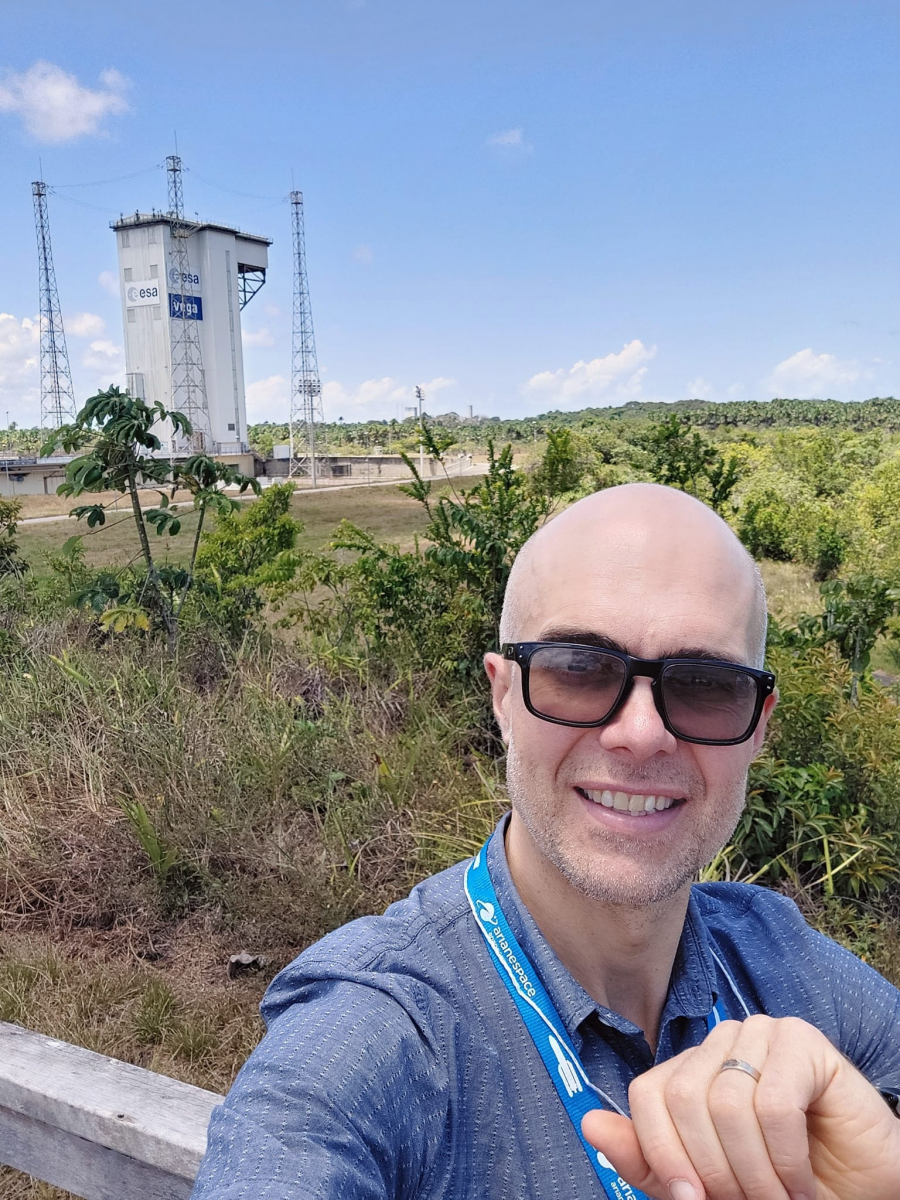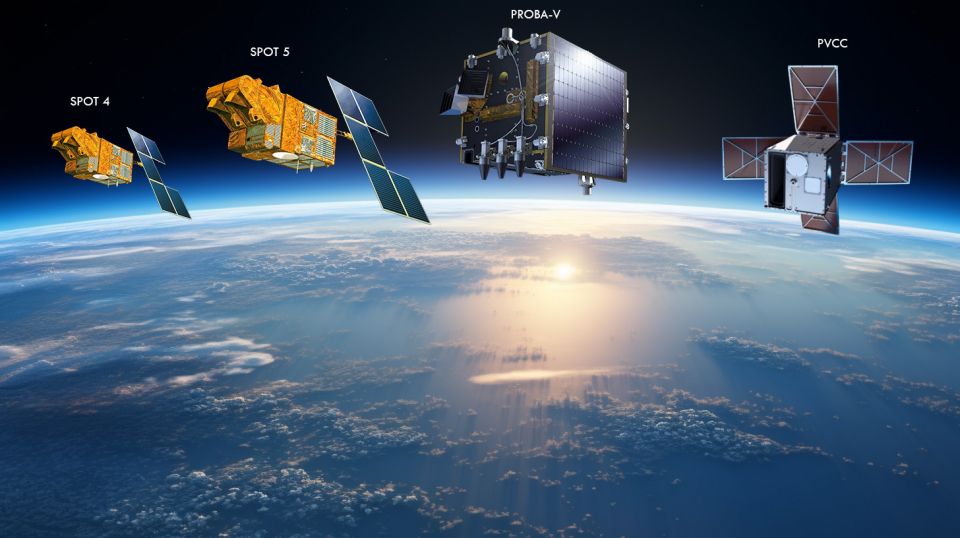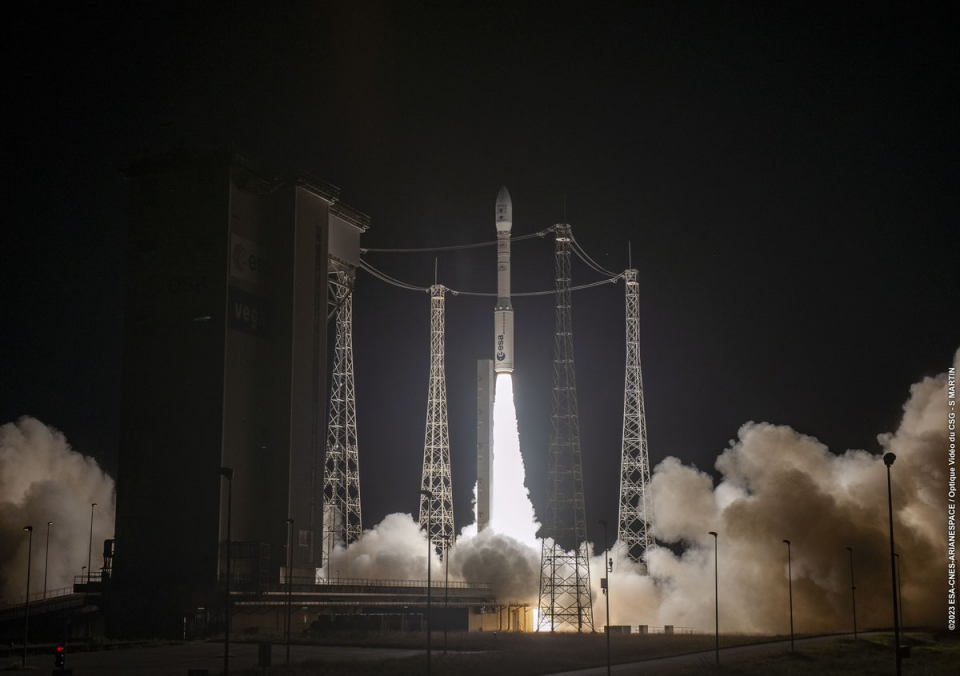Published on 31 October 2023
Unity is strength
PVCC's journey to the cosmos was a result of the concerted efforts of various companies and institutions, all driven by a common vision of advancing Earth observation capabilities.
And Belgium can be proud of this European Space Agency (ESA) project initiated by the Belgian Science Policy Office (BELSPO). The satellite was realised by the Walloon company Aerospacelab, the instrument was supplied by Flanders-based OIP Sensor Systems, the user segment (acquisition planning and data processing) will be handled by the Belgian research institute VITO Remote Sensing and mission telecommanding and data reception services will be provided by ESA's ESEC station (Redu, Belgium) and the Swedish Space Corporation (SSC). The seamless cooperation of these entities has played a pivotal role in PVCC's successful launch and ongoing operations.

Our BELSPO colleague Jan Verbesselt at Kourou (programme manager Earth Observation and Earth Observation expert)
Steven Bogaerts, programme manager in Earth Observation at BELSPO

From left to right: SPOT-4 and SPOT-5 (both carrying a VGT instrument along with their main payload), PROBA-V and the newly launched PVCC
(artist's impression – respective dimensions are not respected)
Monitoring Vegetation past, present and future
The Belgian involvement in vegetation monitoring began decades ago with the launch of SPOT 4 in 1998, a French earth observation satellite carrying the first-ever VEGETATION instrument. Belgium was there to contribute to this satellite as well as to sister SPOT 5 which launched in 2002. Together, these two missions ensured data continuity until 2015.
But by that time, another satellite had already been launched: PROBA-V, developed by a Belgian consortium with small contributions from other countries. Despite its much smaller size, PROBA-V managed to not just continue the legacy of the VEGETATION sensors onboard the SPOT satellites—it did so at a much higher resolution too! PROBA-V exceeded its design lifetime and kept on monitoring the Earth's vegetation until 2021.
And now, the torch has been passed to PVCC. This is no ordinary satellite; it is a groundbreaking achievement in miniaturization. While PROBA-V was considered small in its time, measuring approximately one cubic meter and weighing 140 kg (compared to SPOT-4 and 5's 5-meter length weighing in at around 3,000 kg!), PVCC has taken miniaturization to the next level. At just 12 units in size (30x20x20 cm!) and only 18 kg in weight, PVCC stands as a testament to the remarkable advancements in satellite size reduction. Despite its diminutive dimensions, PVCC proudly carries one of the three spectral imaging instruments that originally graced its predecessor.
PVCC's primary goal therefore is to evaluate the feasibility of mounting high-performance sensors onto nanosats while maintaining data quality. If successful, this could open doors to a new era of space exploration with smaller, more cost-effective missions.

Lift-off of Vega Flight VV23, carrying several nanosatellites into orbit among which PVCC
The Journey to the Skies
PVCC's was lofted into orbit from the European Spaceport at Kourou, French Guiana on October 9th 2023 at 01:36 UTC as part of Vega Flight VV23. The satellite successfully deployed its solar panels, a crucial step toward fulfilling its mission objectives.
Just 3 days after its launch, the nanosatellite already transmitted its first image, offering a view of vegetation in the south-western Alps with a swath of 350 km.
The successful launch of PVCC marks a significant milestone in Belgium’s contribution to Earth observation technology. With this achievement, we look forward to a future where clusters of cheaper, small satellites could complement full-scale missions for Earth observation.
PVCC's successful launch propels us into a future where the boundaries of Earth observation are pushed further, offering new perspectives and paving the way for promising innovations.
More information:
Big Earth imager to be tested on small Vega CubeSat. (2023, October 4). The European Space Agency | Space Engineering & Technology.
